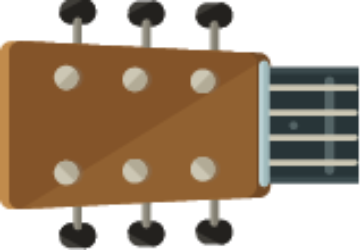There are various guitars suitable for blues playing. These include Strats, Les Pauls and Telecasters; semi-hollow body guitars such as an Epiphone ES-335 may also prove effective; both BB King and Chuck Berry played this model of instrument regularly.
Selecting an instrument you feel most at ease playing will have a tremendous effect on the sound produced by your guitar! Choosing a suitable model will have a dramatic impact on its tone!
1. Fender Stratocaster
Ask non-musicians what comes to mind when they think of an electric guitar and most will answer with an image of a Fender Stratocaster. This iconic model has seen legendary guitarists like Buddy Holly and Jimi Hendrix use it, and artists from every genre since have found new sounds within its classic body shape.
A Stratocaster slices through band mixes like butter. Engineered for maximum playback over many hours of use, its precision engineering makes for an enjoyable playing experience and hours upon hours of fun!
The Player Strat features a solid alder body, with options to upgrade to Ash (which is often found on Telecasters). Furthermore, its rosewood neck and fretboard provide premium tonewood properties which help your strings resonate more clearly with clarity.
2. Gibson Les Paul
Gibson’s Les Paul has left an immense mark on music, and many consider it one of the greatest guitars ever crafted. Unfortunately, not all Les Paul models provide equal quality and tone.
Early Les Paul guitars typically featured a slab mahogany body with a carved maple top and two P-90 single coil pickups; modern models commonly feature humbuckers and come in an assortment of finishes.
Les Paul guitars generally feature maple necks with rosewood fingerboards. Some models feature fade-resistant “cherry” finishes while others boast traditional dark finishes. Although Les Pauls may be heavier than their counterparts, Gibson offers ultramodern weight relief models to combat this issue.
3. Fender Vintera
Fender’s Vintera series offers vintage vibes at significantly reduced costs. Each guitar is carefully designed to deliver period-correct tone with light nitrocellulose lacquer finishes, period-accurate neck profiles, fingerboard radiuses and controls as well as meticulously voiced pickups that deliver that twangy midrange and aggressive bass tones you expect from guitars from the 1950s, 1960s and ’70s.
Unplugged guitars boast bold projection and are a delight to play. While some players might object to its thicker Tele neck, its inherent stability provokes physical interaction among players as languid blues and rockabilly licks come pouring off like chicken on a fork.
4. Gibson S-200 T-Bird
The Guild S-200 T-Bird guitar is an ideal blues guitar as it offers an extensive variety of tones. Additionally, its narrow neck makes for comfortable play and its Ivorex II nuts and saddle ensure smooth intonation without issues; finally it features an automatic die-cast tuner so it stays tuned at all times.
The Epiphone Hummingbird takes its stylistic and tonal cues from its Gibson big brother. Featuring a solid flame maple body with Sitka spruce top for an earthy sound, and equipped with a Fishman pickup for simple tone control – its Lead/Rhythm switch also lets you toggle between single coil tone and standard humbucker configurations to play blues or rock music seamlessly.
5. Epiphone Les Paul
Epiphone guitars are widely favored among professional guitarists for their less stringent production processes and therefore more cost-effective price tag compared to Gibson Les Paul models.
Epiphone offers slightly cheaper maple bodies compared to Gibson’s more premium mahogany bodies; this small difference may have an indirect impact on tone.
Epiphone’s guitars employ polyurethane finishes instead of nitrocellulose finishes, which are more durable and easier to apply, making the instrument much more affordable for beginners and offering great value. Their new inspired by Gibson collection includes popular models such as the ES model, Flying V and Explorer for users to explore.


